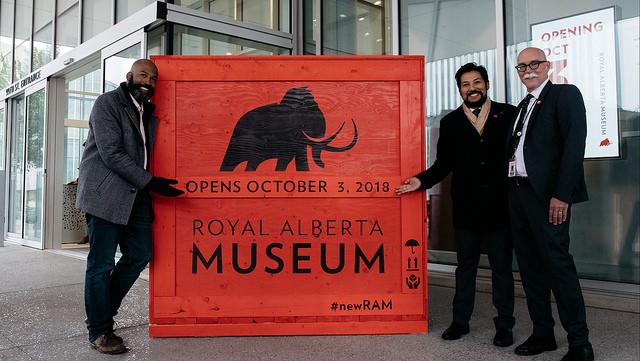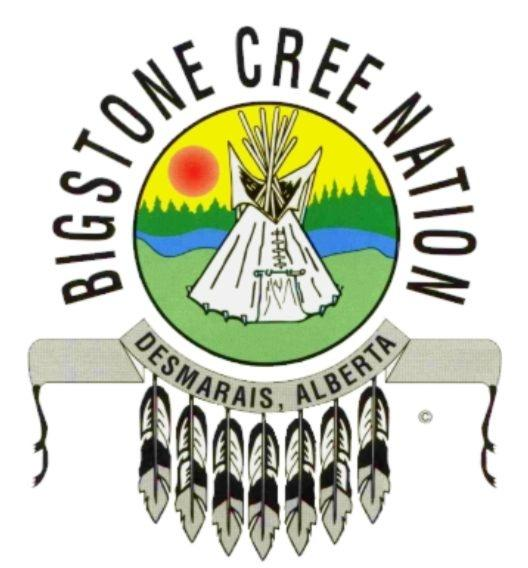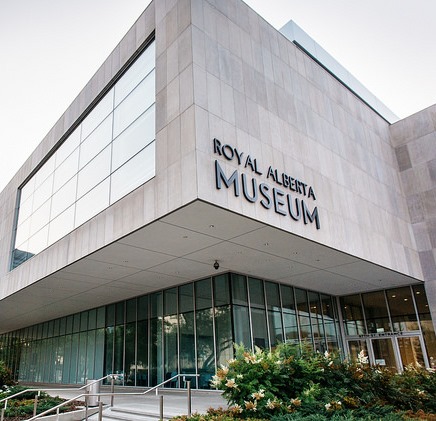(Edmonton) – When stepping inside the new Royal Alberta Museum in Edmonton, visitors will be immersed in stories of Indigenous culture and heritage. In the spirit of reconciliation, Indigenous People will be admitted free of charge. It is located at 9810 103a Avenue, just north of Edmonton City Hall and east of Rogers Place.
From the importance of language and connection with the buffalo to stories of First Nations women who fought to regain their treaty rights, Indigenous content is widely represented in the new Royal Alberta Museum (RAM), opening Oct. 3.
Over the past four years, museum staff have worked closely with Indigenous communities and a 24-person Indigenous Content Advisory Panel to develop content and exhibits for the museum. Inside the new Human History Hall, there are 150 individual exhibits — almost half of these address Indigenous themes.
“Together, museum staff and Indigenous advisers have worked thoughtfully and passionately to develop meaningful galleries that share stories of Indigenous culture with future generations,” stated Minister or Culture and Tourism, Ricardo Miranda. “These stories will live on as the uncensored accounts of Indigenous experiences in Alberta.”
In addition to providing extensive input into the museum’s gallery development, panel members also conducted ceremonies and blessings of both the new museum and the former Glenora facility.
“Staff at the museum have put a lot of effort into connecting with the diverse Indigenous groups across Alberta,” remarked Carrielynn Lund, Indigenous Content Advisory Panel member.
“They have listened to our recommendations and have acted on them which has resulted in the outstanding museum you will see.”
Once the museum opens on Oct. 3, visitors can expect to see and hear Indigenous stories through first-hand accounts. Indigenous content is presented in a variety of ways, including hundreds of objects on display, exhibit text panels translated into Indigenous languages, and films that can be heard or captioned in an Indigenous language, including Plains Cree, Woods Cree, Blackfoot, Dene Tha’, Dënesųłiné, Stoney Nakoda, Nakota, Saulteaux, and Michif.
In addition, when visitors first enter the museum, they will be greeted by a statement in 13 Indigenous languages, along with English and French. It welcomes visitors to the museum and acknowledges that the land on which they stand is Treaty Six territory and a meeting place for generations of First Nations and Métis peoples.
Free admission for Indigenous People
The Royal Alberta Museum rests on Treaty Six territory and the homeland of the Métis. Many of the objects in RAM’s collections and many of the stories presented in the galleries are Indigenous. In the spirit of reconciliation, and to honour the unique relationship between Indigenous Peoples of Alberta and the Crown, the museum extends free admission to Indigenous Peoples.
This aligns with initatives of other Canadian museums that hold and exhibit Indigenous objects.
About the New Royal Alberta Museum
With the official opening on Oct. 3, the RAM will take its place as the largest museum in Western Canada, spanning almost 40,000 square metres (419,000 square feet). This includes more than 7,600 square metres (82,000 square feet) of exhibition space – twice as much as the former Glenora location. The new space allows RAM to provide visitors with new objects and stories to explore, in addition to old favourites that everyone knows and loves.
More than 5,300 objects will be on display in the museum that features:
- Expansive Human History and Natural History Halls chronicling the history of Alberta’s peoples, animals and landscapes.
- An interactive Children’s Gallery designed for hands-on learning through play.
- An expansive Bug Gallery with a visible hatchery.
- A free admission space dedicated to Manitou Asinîy.
A total of $375.5 million is invested in the new museum: $253 million from the Alberta government and $122.5 million from the federal government’s Building Canada Fund.





Thank you for the opportunity when is the free admission start, my son is Metis and he does not look Native. How will that work?
Thank you
Does he have a band card? I’m status so I guess they’d ask me to show my status card. Not sure how metis works.
Here’s a thought… Pay the admission.
Here’s a thought, mind your business. If it’s free for us, we’re going to utilize it.
is this forever for us Natives, and if so do we need to show our status card ?
this is very poor writing. If this is an informative article why does it not list how Indigenous peoples are supposed to access this benefit. How does the RAM define Indigenous, does it include Metis people? Do we have to have ID to demonstrate our nationality or can we self identify?
This piece missed the mark when investigating the story!!!
Ask questions don’t just repeat the media statement the RAM released in the Media notice. Most of the stats listed are completely irrelevant to this story.
Yes, my son as well, but he does have a metis card
What is required to show indigenous heritage for free admission?
My children and I are under the non status First Nation category and thus have no identifying cards to ‘prove’ we are indigenous. I have had a file on hold for two years with the government waiting to be considered indigenous. How is the museum determining who can be identified as indigenous?
What exact day is free for indigenous peoples?
It is free entry for Indigenous Peoples every day! (:
My friend and I were just at the museum and were not required to show our status cards to enter. The museum was amazing – the kids loved it!
Hello, I am physically disABLED, I am First Nation, I have a Status Card.
I’m visiting in August.
Is there a manual wheelchair at the desk I can use for the tour?
I’m unable to wheel myself, my husband is my care provider, he is not Status.
Would his admission be FREE? Thank you